4 Day Road Trip in Israel – Biblical Sites, Ruins, Castles & Humus
categories: asia travel, middle east travelWhere else can you see a crusader castle before lunch, a 9,000-year-old village in the afternoon, and end the day sleeping near the house where Jesus grew up?

Israel is a small country, which makes it ideal for a road trip. With surprisingly little driving and a surprisingly short amount of time, you can see much of the country. This is a good thing because on our trip to Israel we had four days and much to see. Here are some recommendations for a somewhat hurried itinerary:
Table of contents: ()

Jerusalem
We started our road trip in Jerusalem where we had already spent a couple of days seeing the sites including the Machane Yehuda Market and the old city (see Self-Guided Walking Tour of Jerusalem’s Old City).
Tel Aviv
Jerusalem is on the eastern edge of Israel where it meets with the Palestinian Authority, and Tel Aviv is on the western edge at the sea but the two cities are so close together that they share an airport. We got a ride to the airport from a friend and picked up a rental car. By default, a rental car in Israel will be a standard transmission but we were able to upgrade to a rather strange and kludgy robot automatic.
Our first stop was Tel Aviv where we stayed near the beach and arrived in time to see the sunset over the Mediterranean. We stayed at the Abratel Suites Hotel which was pleasant with excellent service. We were there on Friday night, when some restaurants were closed at the start of Sabbath but had a nice meal at Olive Korner.

The House of Simon the Tanner
In the morning we walked down the wonderful esplanade to the south to the old city of Jaffa. Tel Aviv is a relatively modern city but Jaffa dates back to biblical times. It was in Jaffa where Peter the apostle received a vision that led to the acceptance of Gentiles like me into the early Christian church. There is still a house in Jaffa which claims to be the house where Peter stayed (The House of Simon the Tanner). It’s just behind a church dedicated to Peter.

Abouelafia bakery
We visited Jaffa on Saturday or Shabbat when many things in Jaffa and elsewhere in Israel are closed. We had a walk through the old town past some of the colorful shops with appropriate stops at a coffee shop and a delicious smelling bakery, Abouelafia bakery, where we picked up some baked goods for lunch.
Caesarea National Park
About an hour north of Tel Aviv is Caesarea National Park, which protects a series of Roman ruins dating from the time of Christ. The city was built around the palace of Herod the Great, which later became the headquarters for the Roman governors. The apostle Paul was in prison here. The vision Peter saw in Jaffa led him here to the home of a Roman centurion.
Caesarea National Park is a curious thing. As you walk in the northern gate you come to a series of shops and restaurants and a park area set amongst the Roman ruins. But if you head further south along the coast you come to a second entrance where you need to show your ticket, with an additional cost, to visit the main ruins. Here you’ll see ruins of baths and houses, a hippodrome where chariot races took place, and a reconstructed theater which is still used for performances today.
When we bought our tickets we chose to get a six pack of entrances to national parks which was a wise decision. It gave us an incentive to look for other national parks along our route that we might have missed. If you’re going to be in Israel longer you can buy an unlimited national park pass good for 2 weeks.
Nearby on a public beach is the remains of a Roman aqueduct, which now just gives shade to picnickers;
Haifa

Baha’i Gardens
Further north along the coast you come to the city of Haifa, which is built on the slopes of Mount Carmel. The Baha’i Gardens, which are a UNESCO site, climb the northern slope of Mount Caramel. You can walk or rather hike the gardens or merely enjoy the beautiful view from the top or the bottom. We stayed at the Haifa Bay View Hotel at the top of Mount Carmel, not far from the top edge of the gardens. As the name suggests, the hotel did have an excellent view.
For more information about all the UNESCO World Heritage sites of Israel listen to UNESCO World Heritage Sites of Israel and Palestine – Amateur Traveler Episode 558
Acre / Akko

old fortress of the Knights Hospitaller – Acre / Akko
The next national park and UNESCO site we visited was the Crusader town of Acre or Akko. When the Mamluks retook the holy lands from the Crusaders in 1200, the ruler, Sultan Baibars, built his castle on top of the old fortress of the Knights Hospitaller. He just filled the castle in with dirt and used it as a foundation. In the process he managed to preserve much of that castle for later generations, although that certainly wasn’t his intent.
The Hospitallers cared for the sick and poor of all religions in Acre, when they weren’t busy squabbling with their Knights Templar neighbors. You should visit their large and impressive castle. I recommend the audio guide, which does a good job of explaining what you’re seeing even if you knew nothing (as I did) of the Knights Hospitaller.

Old Akko

Hummus Said
The old city has more of an Arab population, so it has some really good hummus restaurants which are both tasty and inexpensive. We found the Hummus Said on Yelp and tracked it down the in the warren of streets that is Old Akko.
Near the old harbor, there’s a tunnel built by the Hospitallers to access the harbor. There’s not as much to see here as at the fortress, and it is certainly not something I would recommend to the claustrophobic.
Tel Megiddo (Armageddon) National Park

Cistern – Tel Megiddo (Armageddon) National Park
Later that afternoon we visited another national park / UNESCO site Tel Megiddo. Archaeological digs on this mound have found not one city but city built on city built on city over the course of 9,000 years. The most impressive feature of Tel Megiddo is the cistern which was carved with hand tools into the rock, over 100 feet deep, and with a tunnel over 300 feet long to the water source.

Cistern – Tel Megiddo (Armageddon) National Park
This site is better known as Armageddon, its Greek name. Armageddon makes an appearance in the Bible as the place of the last battle in time. The plains outside Armageddon have seen many battles through the years as this was the route from Egypt to the rest of the fertile crescent.
Nazareth

Fauzi Azar Inn (by Abraham Hostels) in Nazareth
We stayed in the Fauzi Azar Inn (by Abraham Hostels) in Nazareth, which is an old nobleman’s house. It is a beautiful building (though showing its age). We stayed in a private room up on the top or third story. The hostel is in the pedestrian-only portion of the old town, so you will need to be able to carry, roll, or drag your luggage here. If you are staying for longer than we did, Abraham Hostels also runs their own tours in Israel which are worth looking into. The hostel is surrounded by interesting shops and just a stone’s throw from the market in the old city with its many small shops and restaurants. You can certainly get souvenirs here though it’s also used by locals for their normal shopping.

Church of the Annunciation Grotto

Church of the Annunciation
One of the most beautiful churches we saw in Israel, and probably my favorite, was the church of the Annunciation in Nazareth. It is built over the top of a house which was believed to have been where Joseph and Mary lived with Jesus as a child. The builders left the ruins of the house standing in the grotto and built a modern church around them. The church is decorated with artwork from many countries depicting the “Annunciation” (when Mary is told she will have a child and that child will be Jesus).
We were less impressed with the city of Nazareth itself. It’s certainly a busy city. Being unimpressed with Nazareth is not a new problem, Nathaniel in the Gospel of John, when he hears that Jesus is from Nazareth, says “can anything good come out of Nazareth?”.
Capernaum National Park

Peter’s House Capernaum National Park
Many of the sites mentioned in the New Testament as places where Jesus did ministry are clumped in a small area of the northern end of Lake Kinneret (also known as Lake Gennesaret or the Sea of Galilee). Here you’ll find a house purported to be the house of Peter. More precisely you will find a church built on a church built on a house purported to be Peter’s. The house is located just steps from the lake, which would be handy for a fisherman.

Feeding of the 5,000 Church
Also at Capernaum National Park are the ruins of the synagogue built on the ruins of a synagogue where Jesus likely taught. Just down the road from there is a church located on the traditional spot where the feeding of the 5,000 took place, just below the hill which is the traditional location for the Sermon on the Mount.
Jordan River Valley
We stopped for bagels at The Wisdom of the Bagel in Kinneret at the Bet Gabriel center at the southern edge of the lake.

Belvoir Fortress / Kochav HaYarden
After lunch, we drove up in the hills above the Jordan River to visit the ruins of a crusader castle at Belvoir National Park. This whole park only takes about an hour to see but has some beautiful views of the Jordan River Valley.

View from Herb Farm Gilboa
We spent that night at the Ein Harod kibbutz and dined on Mount Gilboa, where King Saul died, at a terrific restaurant called Herb Farm Gilboa.

Baptism Site of Jesus / Qasr el Yahud
In the morning we visited the baptism site of Jesus on the Jordan River (Qasr el Yahud). There is more to see from the Jordanian side than the Israeli side at the baptismal site (which I had visited previously including a visit accompanying the Pope). There are a number of churches on the Israeli side which are historic but still located in minefields. Israel has announced plans to clear those minefields and reopen access to those churches.
Qumran National Park

Qumran National Park
Our next stop was at Qumran National Park. Qumran was the community where the writers of the Dead Sea Scrolls lived. It was a religious sect that died out mysteriously in the first century. Likely they joined those rebelling against Rome and died down the road at Masada. Particularly noticeable out here in the desert was how many pools the community had for ritual bathing.
The park is a great view of the community and history, but if you want to see the Dead Sea Scrolls themselves you will need to go to the Israel Museum in Jerusalem.
Ein Gedi Antiquities National Park

Ein Gedi Antiquities National Park
Possibly the smallest National Park we visited was the Ein Gedi Antiquities which contains the ruins of a single ancient synagogue. The park takes all of 15 minutes to see, and the highlight is some of the excellent mosaic work from the floor of the old synagogue.
The unexpected surprise was running into wandering ibex goats migrating past the park entrance.
We drove past the Ein Gedi Nature Reserve which is much more popular than the antique area, but which we did not have time for on this trip. It is known as one of Israel’s best-hiking spots.
Masada National Park

Masada National Park
Masada is an old palace, again built by Herod the Great, on a mesa in this desolate part of Israel. It has a great view of the Dead Sea and Jordan River Valley, but Herod built it more for defense than the scenery. He carved great cisterns into the rock and stored up years’ worth of supplies. These came in handy in the last act of the Jewish rebellion against Rome in 70 to 80.

Roman camps, the line of the Roman siege wall – Masada National Park
After the Roman legions had already invaded Israel, sacked Jerusalem and captured the rest of the country, the last rebels held up here at Masada. From the top, you can still make out the square layout of the Roman camps, the line of the Roman siege wall, and the ramp which the Romans built to capture Masada.

Roman siege ramp – Masada National Park
The night before the final Roman assault, most of the defenders of Masada killed themselves. They preferred death as free men instead of life in slavery. For that reason, Masada is not just a historic site but has been a symbol for modern Israel and especially for the Israeli army. You are likely to see rambunctious squads of soldiers during your visit.
Ambitious travelers can hike up the serpentine path which is one of all the ways to climb Masada while the less ambitious can take the gondola.
Even if the story of Masada wasn’t so memorable, and even if the site wasn’t so historic, the stark beauty of the site alone would recommend going out of your way to visit it.
There is a food court at the National Park which is good because you are a bit off the beaten path at Masada just as Herod liked it.
Conclusion
We spent our last night again in Tel Aviv, this time at the Olympia Tel Aviv Hotel again near the beach. We dropped off our rental car at the airport and took a train into the main train station in Tel Aviv which is quick and easy, but in the morning we had a very early flight and hailed a cab back to the airport. It is surprising to me that there are not hotels by the airport itself.
You can see quite a lot of Israel in a few days. Our entire itinerary would have taken just over 8 hours to drive if we’d driven it straight through. If we’d had more time we might’ve taken in more sites in the south or headed up to the Golan Heights. We certainly would have seen more national parks and maybe spent more time in Jerusalem.
Our trip was a bit rushed and doing the same itinerary in six days would probably be more comfortable for most people. In the winter and spring, many of the national parks close at four or five o’clock and often close admissions to visitors an hour before closing time, so that constrained some of our visits.
We saw a lot of old things, we took a lot of pictures, and we ate a lot of hummus, making it almost a perfect road trip.
For more information about Israel listen to Travel to Israel – Amateur Traveler Episode 167.
and Travel to Jerusalem – Amateur Traveler Episode 192
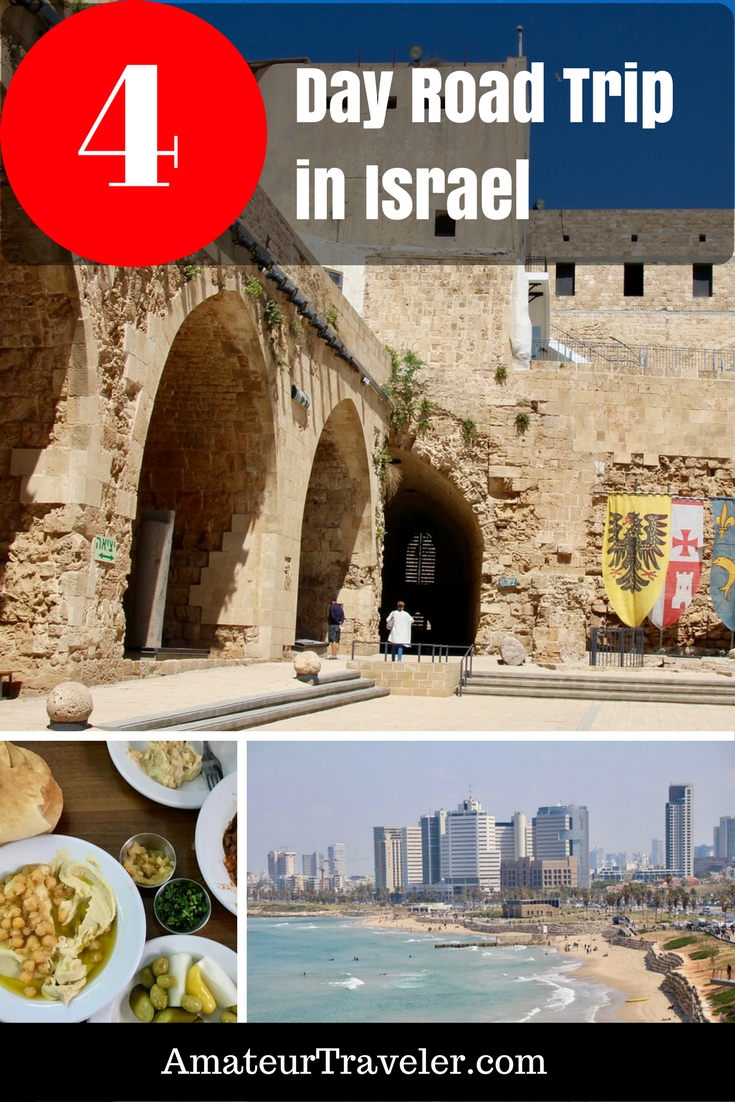
- Get a universal plug adapter
- Buy Travel Insurance
- Get an eSim to be able to use your smartphone abroad.
- Get a Car Rental
- Log your park visits with a Passport To Your National Parks
- Book Your Accommodation HERE
- Search for Great Tours HERE
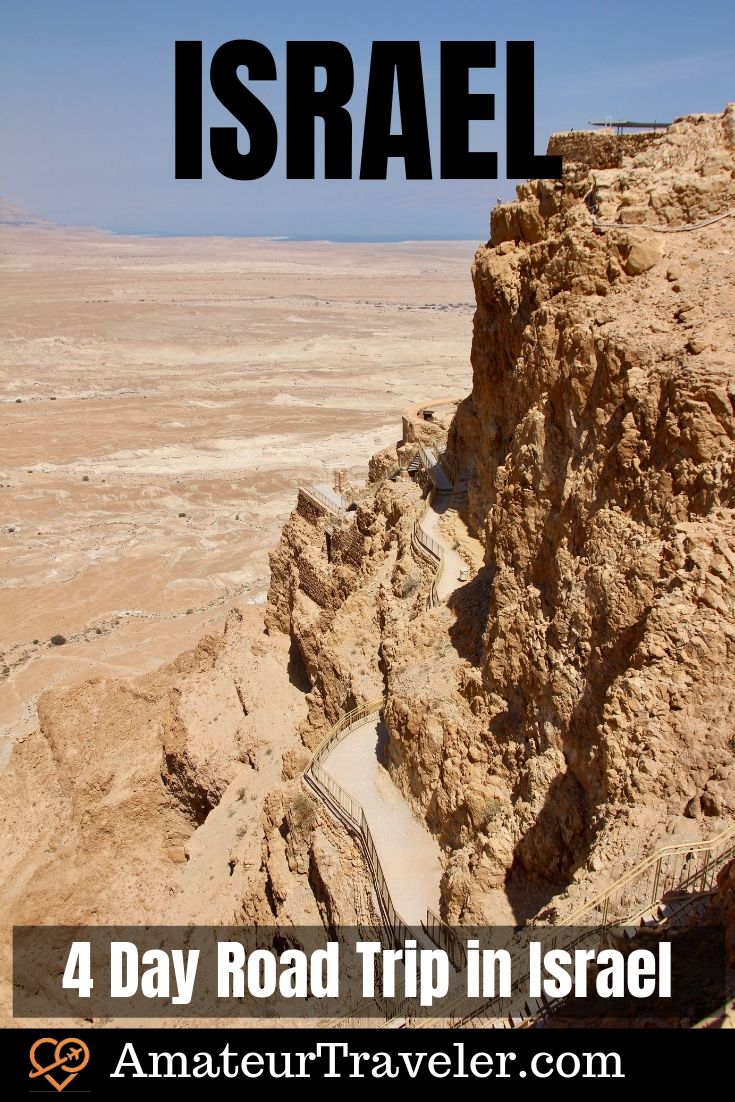
+Chris Christensen | @chris2x | facebook
3 Responses to “4 Day Road Trip in Israel – Biblical Sites, Ruins, Castles & Humus”
Leave a Reply
Tags: article, israel, national park, road trip, unesco











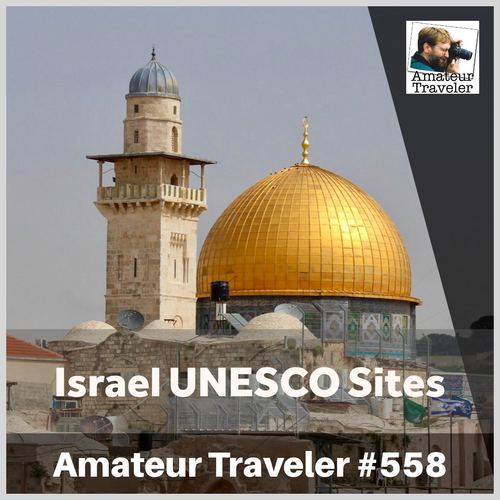 UNESCO World Heritage Sites of Israel and Palestine – Episode 558
UNESCO World Heritage Sites of Israel and Palestine – Episode 558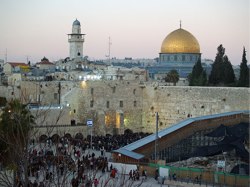 Travel to Israel – Episode 167
Travel to Israel – Episode 167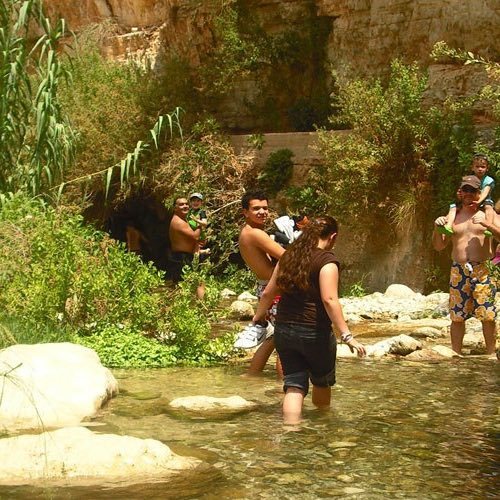 Road Trip Through Southern Israel
Road Trip Through Southern Israel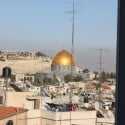 Israel Travel Advice – What to Know Before Your First Trip
Israel Travel Advice – What to Know Before Your First Trip

Richard
Says:July 19th, 2017 at 1:27 am
For such a small country, there is a lot of great things to see;)
Mike
Says:April 7th, 2019 at 10:48 pm
Hey Chris, you made a huge trip across Israel. Next time try also to visit Caesarea , Nimrod Fortress, Rosh-haNikra grotes, Ariel Sharon park (build above of mount of garbage). I really love this country))
Chris Christensen
Says:April 7th, 2019 at 11:06 pm
We did visit Caesarea and love it.